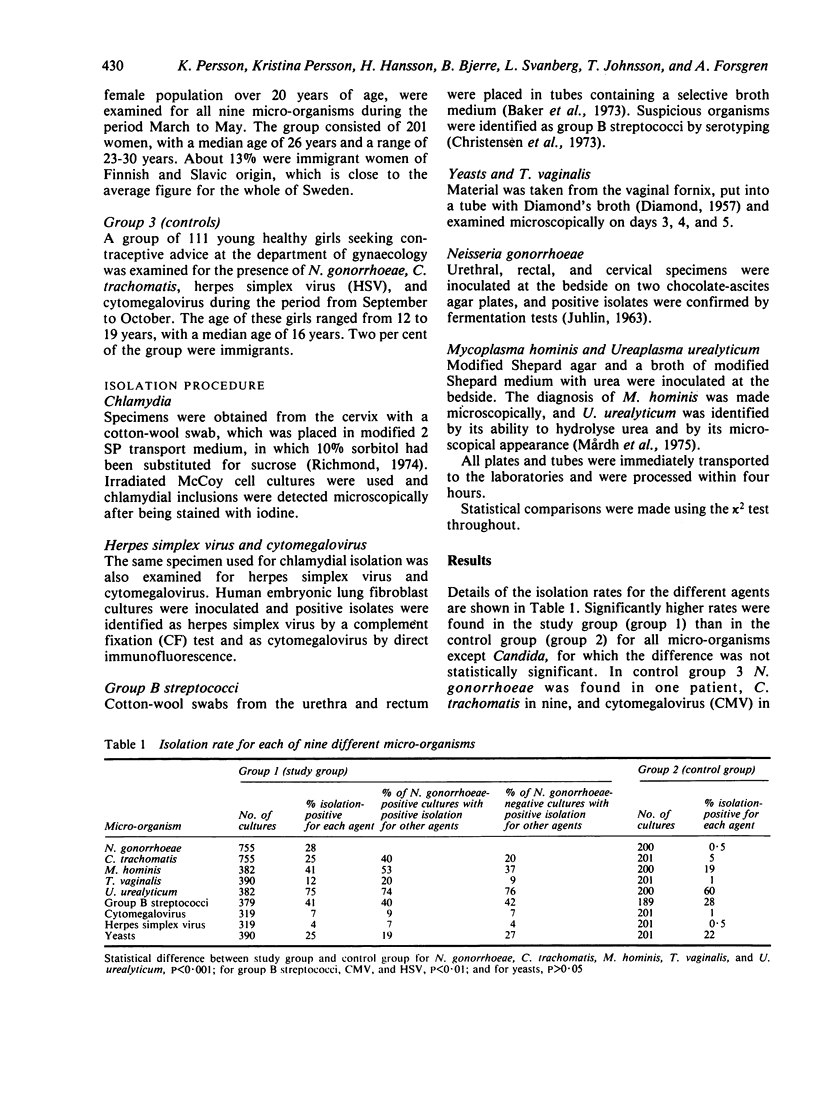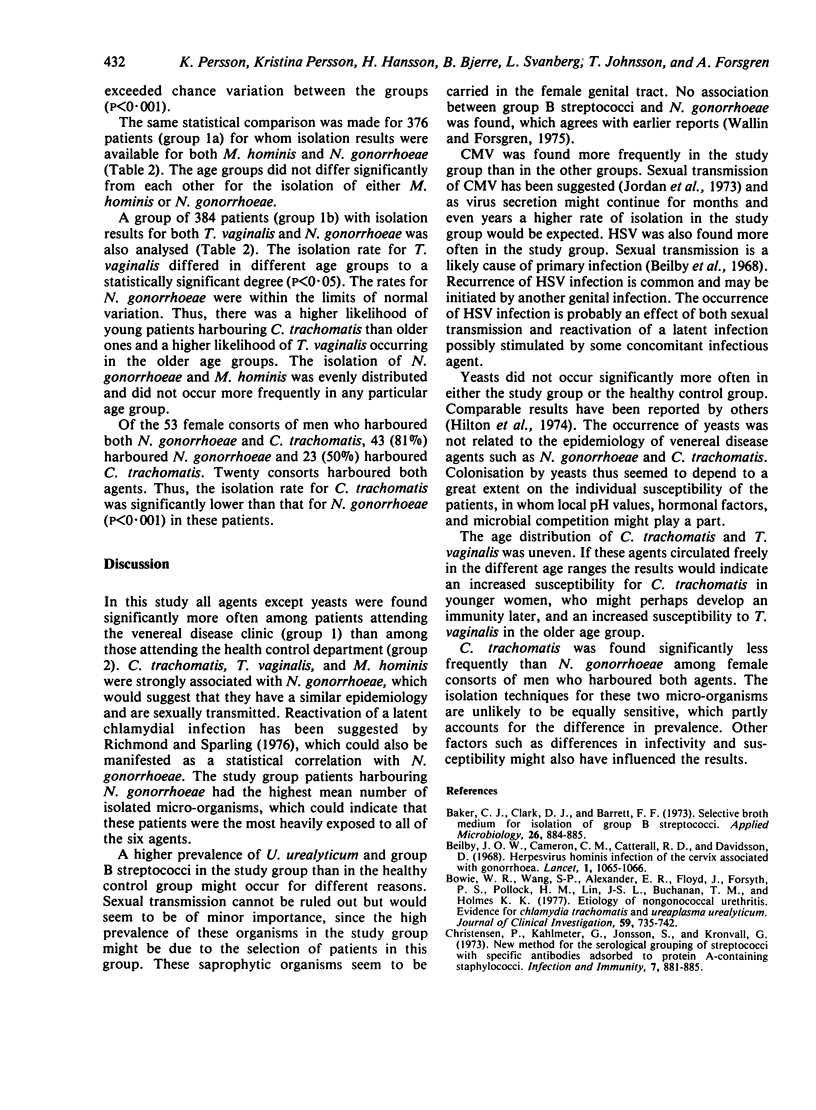Abstract
In a study of the prevalence of nine different micro-organisms in the female genital tract in a Swedish population, significantly higher isolation rates occurred among women attending a venereal disease clinic than among those attending a gynaecological health control department. The prevalence of Candida albicans, however, was similar in different groups, individual susceptibility being the most important factor. Chlamydia trachomatis, Trichomonas vaginalis, and Mycoplasma hominis occurred concomitantly with Neisseria gonorrhoeae, indicating a similar epidemiology for all these agents. Younger patients seemed to have an increased susceptibility to C. trachomatis whereas older patients had an increased susceptibility to T. vaginalis.
Full text
PDF




Selected References
These references are in PubMed. This may not be the complete list of references from this article.
- Baker C. J., Clark D. J., Barrett F. F. Selective broth medium for isolation of group B streptococci. Appl Microbiol. 1973 Dec;26(6):884–885. doi: 10.1128/am.26.6.884-885.1973. [DOI] [PMC free article] [PubMed] [Google Scholar]
- Beilby J. O., Cameron C. H., Catterall R. D., Davidson D. Herpesvirus hominis infection of the cervix associated with gonorrhoea. Lancet. 1968 May 18;1(7551):1065–1066. doi: 10.1016/s0140-6736(68)91414-1. [DOI] [PubMed] [Google Scholar]
- Bowie W. R., Wang S. P., Alexander E. R., Floyd J., Forsyth P. S., Pollock H. M., Lin J. S., Buchanan T. M., Holmes K. K. Etiology of nongonococcal urethritis. Evidence for Chlamydia trachomatis and Ureaplasma urealyticum. J Clin Invest. 1977 May;59(5):735–742. doi: 10.1172/JCI108694. [DOI] [PMC free article] [PubMed] [Google Scholar]
- Christensen P., Kahlmeter G., Jonsson S., Kronvall G. New method for the serological grouping of Streptococci with specific antibodies adsorbed to protein A-containing staphylococci. Infect Immun. 1973 Jun;7(6):881–885. doi: 10.1128/iai.7.6.881-885.1973. [DOI] [PMC free article] [PubMed] [Google Scholar]
- DIAMOND L. S. The establishment of various trichomonads of animals and man in axenic cultures. J Parasitol. 1957 Aug;43(4):488–490. [PubMed] [Google Scholar]
- Dunlop E. M., Vaughan-Jackson J. D., Darougar S., Jones B. R. Chlamydial infection. Incidence in 'non-specific' urethritis. Br J Vener Dis. 1972 Dec;48(6):425–428. doi: 10.1136/sti.48.6.425. [DOI] [PMC free article] [PubMed] [Google Scholar]
- Hilton A. L., Richmond S. J., Milne J. D., Hindley F., Clarke S. K. Chlamydia A in the female genital tract. Br J Vener Dis. 1974 Feb;50(1):1–10. doi: 10.1136/sti.50.1.1. [DOI] [PMC free article] [PubMed] [Google Scholar]
- Jordan M. C., Rousseau W. E., Noble G. R., Steward J. A., Chin T. D. Association of cervical cytomegaloviruses with venereal disease. N Engl J Med. 1973 May 3;288(18):932–934. doi: 10.1056/NEJM197305032881803. [DOI] [PubMed] [Google Scholar]
- Richmond S. J., Sparling P. F. Genital chlamydial infections. Am J Epidemiol. 1976 May;103(5):428–435. doi: 10.1093/oxfordjournals.aje.a112243. [DOI] [PubMed] [Google Scholar]
- Richmond S. J. The isolation of Chlamydia subgroup A (Chlamydia trachomatis) in irradiated McCoy cells. Med Lab Technol. 1974 Jan;31(1):7–9. [PubMed] [Google Scholar]
- Wallin J., Forsgren A. Group B streptococci in venereal disease clinic patients. Br J Vener Dis. 1975 Dec;51(6):401–404. doi: 10.1136/sti.51.6.401. [DOI] [PMC free article] [PubMed] [Google Scholar]


